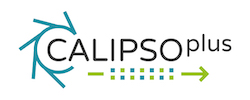WP22: TA17 – Tailor-made for SMEs Trans-national Access (TamaTA)
Objectives
- Increase benefits of innovation and competitiveness of SMEs through the use of light-source infrastructures
- Present the capabilities of the light-source infrastructures to SMEs
- Provide a way to SMEs to access light-source infrastructures
- Overcome the roadblocks for SMEs to access to large Research Infrastructures
- Provide to SMEs the competitive advantages of using the leading edge Research Infrastructures
Description of the work package
European Research Infrastructures, funded at national or international level, are accessible for all European researchers. Due to the very successful Trans-national Access programme of the EU, this possibility has extensively been exploited. However, the users taking advantage of this offer are predominantly from academia. The participation of industrial users is small; it is even smaller when considering SMEs. For this reason this Trans-national Acces Activity is focused on industry researchers from SMEs, by adapting the successful Trans-national Access user programme to facilitate and promote innovation for industry through the use of these Research Infrastructures.
SMEs are dynamic companies and CALIPSOplus will further increase their competitiveness and their capabilities to steer and profit of innovation. CALIPSOplus will allow SMEs to go beyond the simple feasibility access foreseen in the industry Networking Activity (NA3) and to carry out a full experiment or set of experiments. To facilitate the access and to reduce costs, a remote access is foreseen based on sample mail-in without physical presence of the industrial researcher at the facility. In this way researchers from SMEs, normally with very tight budgets, will have the same access opportunities independently of their location within Europe and with respect to the light source. This access mode will be particularly valuable for SMEs located in countries without a national light source, whereas it will promote light-sources use by SMEs located in regions around an existing light source. For non-expert SMEs, support for data analysis and interpretation will be offered in addition.
Tailor-made for SMEs trans-national acces
The selection panel of experts will evaluate the industrial proposals based on scientific merit, on innovation potential and on potential impact. If the proposal is accepted, the SME will have access to the requested light sources and the experiments will be supported through TamaTA. The access procedure will be sufficiently fast to cope with the usual industrial timeframe requirements. In order to provide a framework for promoting this access scheme to SMEs, a “voucher scheme” for a pre-defined amount of beamtime and of data analysis respectively, corresponding to the usual request related to one project, will be introduced. This would render the access more comfortable and more familiar for users from industry and remove cultural barriers.
Access by SME users
will be offered in a coordinated way by the following light sources:
- ALBA, managed by CELLS, offers all its beam lines. An industrial liaison office is in place. In three years more than 60 national and international industrial experiments have been carried out.
- ANKA, at KIT, offers 17 beamlines. ANKA Commercial Services coordinates industrial access to X-ray lithography, spectroscopy, scattering and imaging.
- ELETTRA set up an industrial liaison office to manage technology transfer and to promote the use of the facilities in applied research and for industrial applications. Full confidentiality is ensured.
- ESRF offers all of its beamlines. The ESRF operates a dedicated business development office to support industrial access.
- DESY offers rapid access to all its beamlines at PETRA III and PETRA III Extensions and also at FLASH. DESY has experience in building up SME networks tailored around special topics and needs.
- DIAMOND offers all of its operational beamlines. Industrial users at Diamond are supported by an industrial liaison office. Over 90 companies have used Diamond.
- European XFEL started its operation September, 1st 2017. An industrial liaison office is going to be set up. The industrial users will be selected to maximize the impact on the European and international economy.
- MAX IV, at Lund University, will offer an increasing number of beamlines. MAX IV Laboratory has established an industry liaison office to facilitate industrial access.
- SLS offers all of its beamlines and, as of 2018, SwissFEL as well. PSI operates the industrial liaison office and the SLS Techno Trans AG. PARK innovAARE, a joint project between the Canton Aargau and PSI, was approved as network location.
- SOLEIL offers its 29 beamlines. Half of them are used by industry. An industrial liaison office has been set up.
The experience acquired will be shared with other research communities such as neutrons and laser facilities to further exchange and foster industry access with other Research Infrastructures. In those cases where the data analysis knowledge is not available at the facilities, a service provider like HZG, NOVITOM, EXCELSUS, ACRDM or similar will be used.
